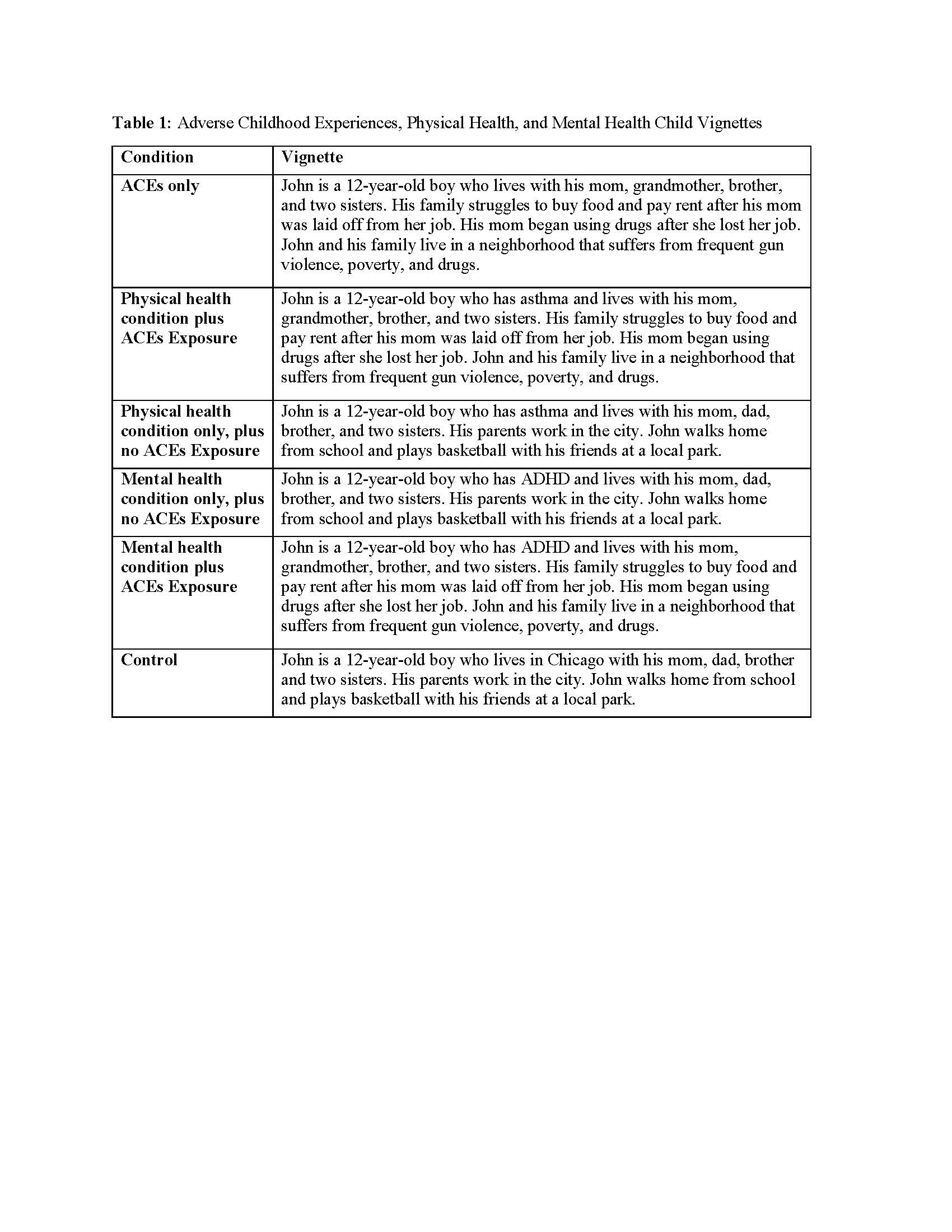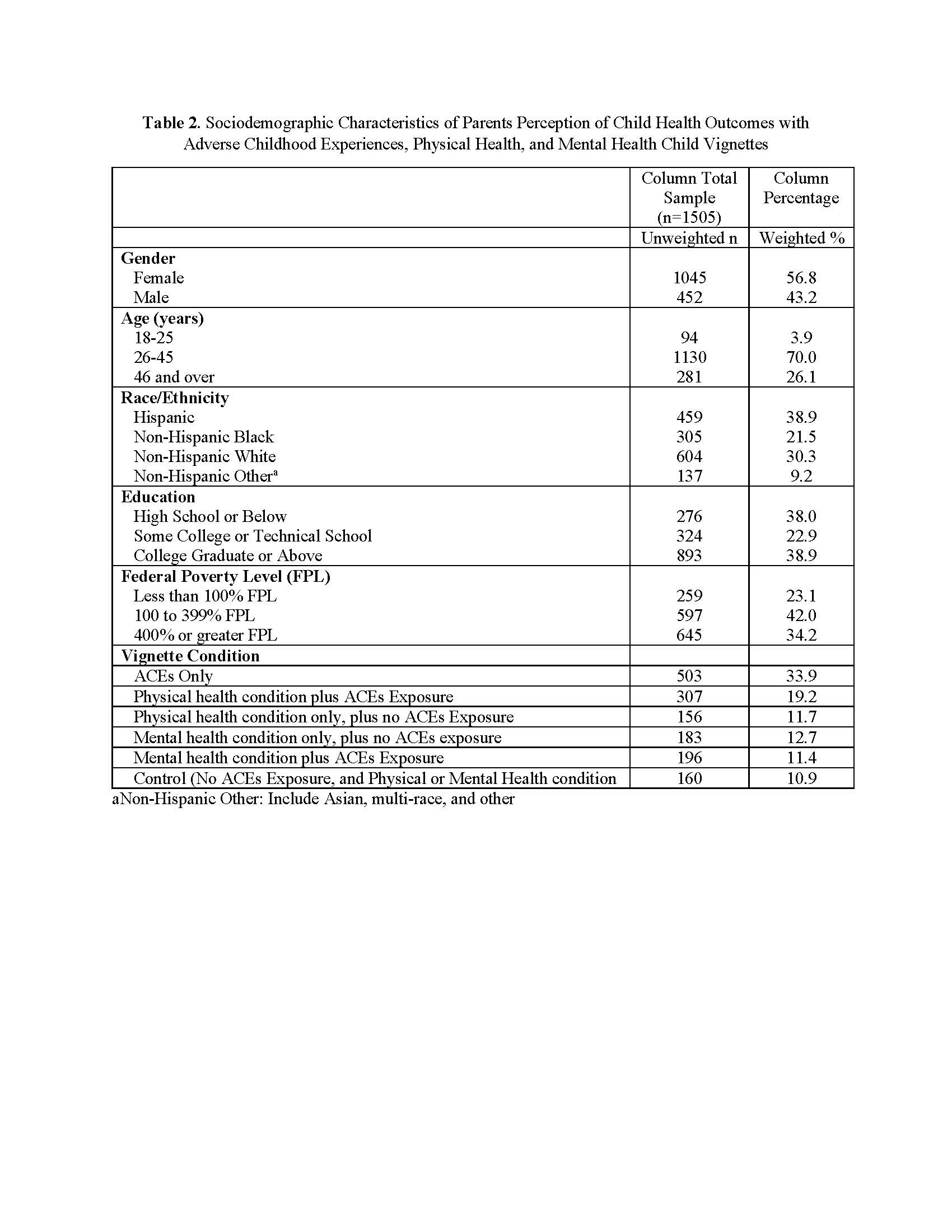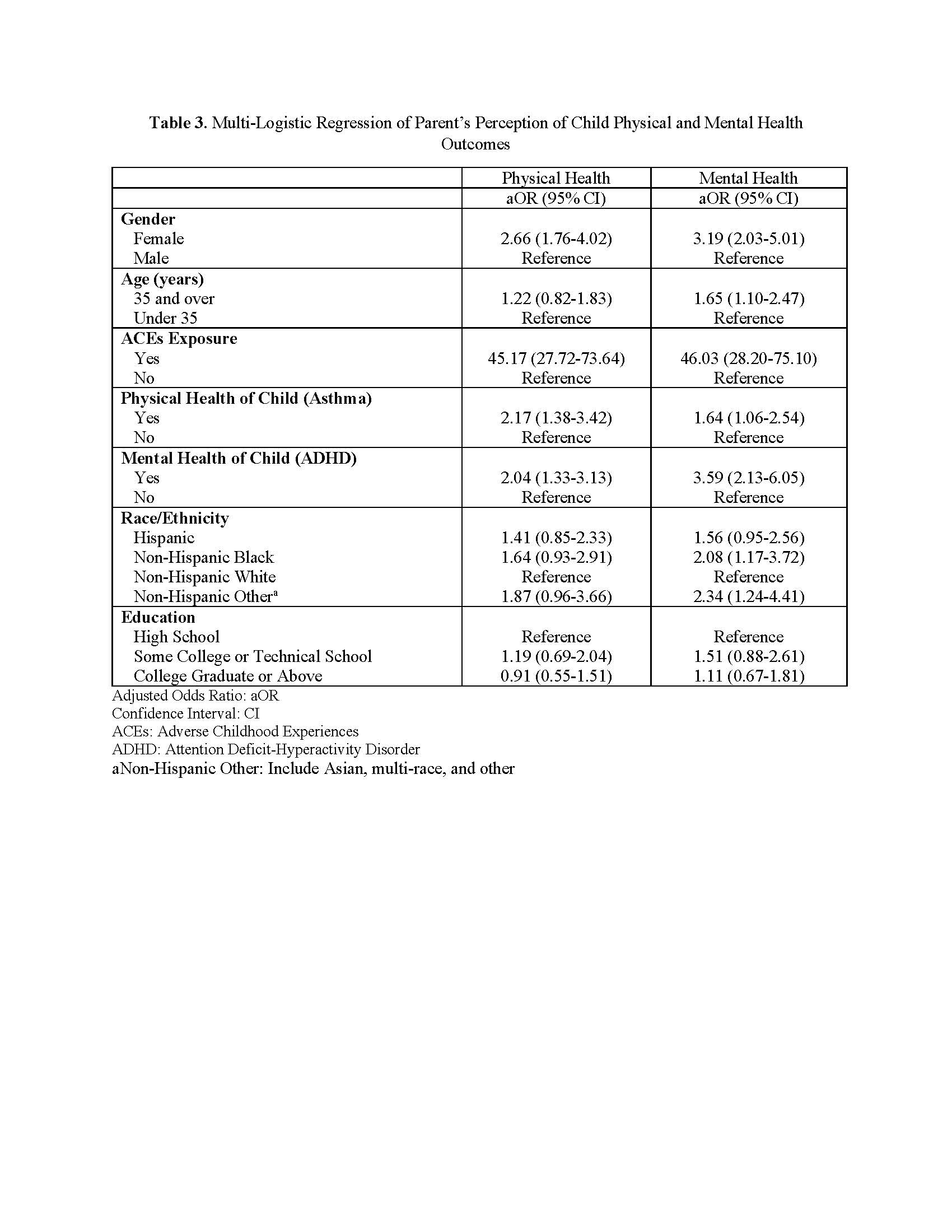Health Equity/Social Determinants of Health
Health Equity/Social Determinants of Health 9
586 - Parents’ Perceptions about Adverse Childhood Experiences and Child Health Outcomes
Publication Number: 586.413
- AB
Audrey G. Brewer, MD, MPH (she/her/hers)
Instructor of Pediatrics
Ann & Robert H. Lurie Children's Hospital of Chicago/Northwestern University Feinberg School of Medicine
Chicago, Illinois, United States
Presenting Author(s)
Background: Adverse childhood experiences (ACEs) are a major public health concern, increasing a child’s risk for poor physical and mental health outcomes over their life course. However, little is known about parents’ perceptions of health outcomes when children are exposed to ACEs.
Objective:
To examine parents’ perceptions regarding physical and mental health outcomes for children depending on a child’s exposure to ACEs versus specific physical or mental health conditions.
Design/Methods: A population-based survey experiment was conducted through the Voices of Child Health in Chicago Parent Panel Survey administered November 2020-February 2021 in English and Spanish via web and phone to parents from all 77 neighborhoods in Chicago. Eligible parents had at least one child < 18 years old in the household. This study explored parents’ perceptions of physical and mental health outcomes for children, randomly assigning respondents to 1 of 6 brief written hypothetical scenarios regarding a child’s (not their own) physical health condition (asthma), mental health condition (attention-deficit/hyperactivity disorder (ADHD)), or whether the child experienced ACEs versus a control scenario of a hypothetical child who did not have a physical health condition, mental health condition, or experienced ACEs (Table 1). Parents self-identified race/ethnicity and other demographic characteristics. Chi-squared tests and multivariable logistic regression were used to examine associations between parents’ perception of the hypothetical child’s physical and mental health outcomes dichotomized as: good health (excellent, very good, and good), and poor health (fair and poor). Data were weighted to be representative of parents with child(ren) < 18 years old in Chicago.
Results:
Responses were obtained from 1,505 Chicago parents (40% Hispanic, 21% Black, 30% White, and 9% Asian/Other). (Table 2). Bivariate and adjusted analyses revealed that parents perceived that a child’s exposure to ACEs was strongly associated with poorer physical health (aOR=45.2, 95% CI: 27.7, 73.6) and mental health (aOR=46.0, 95% CI: 28.2, 75.1) outcomes for the hypothetical child compared to the hypothetical child without ACEs (Table 3).
Conclusion(s): Parents perceive a strong connection between children’s exposure to ACEs and pediatric physical and mental health outcomes. This aligns with growing concerns that parents express regarding exposures to ACEs. These findings may help to support collaborative strategies between parents and pediatric clinicians to collect information about ACEs during healthcare visits and directly address parents’ concerns. 


